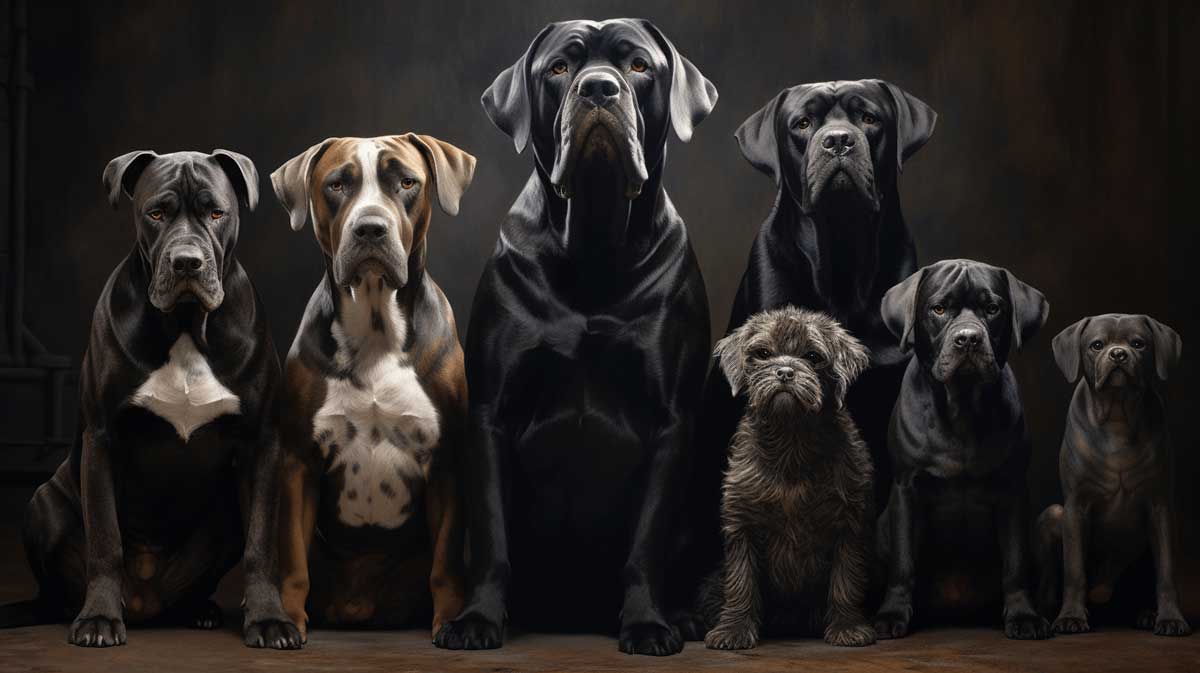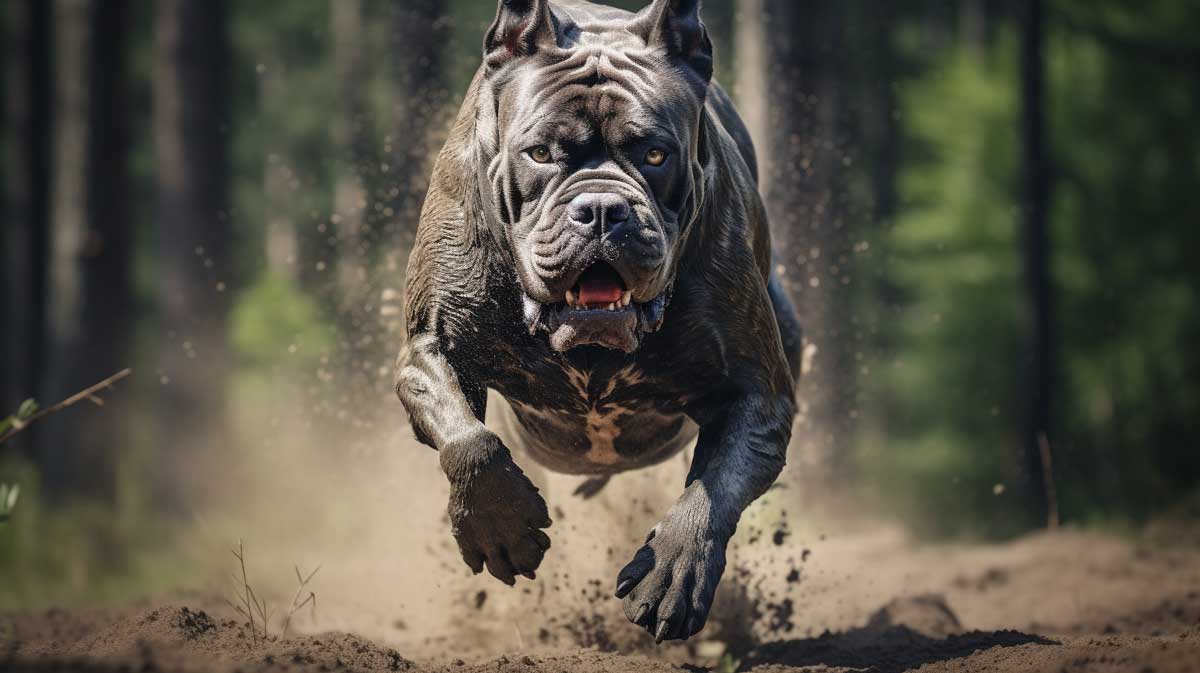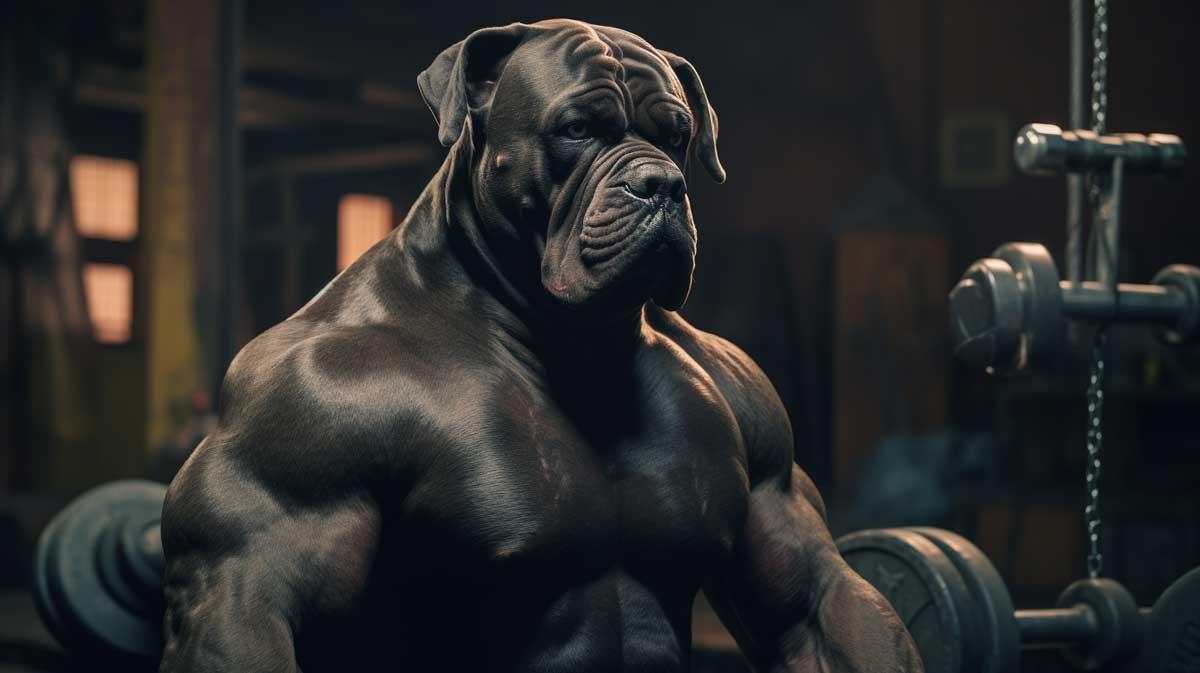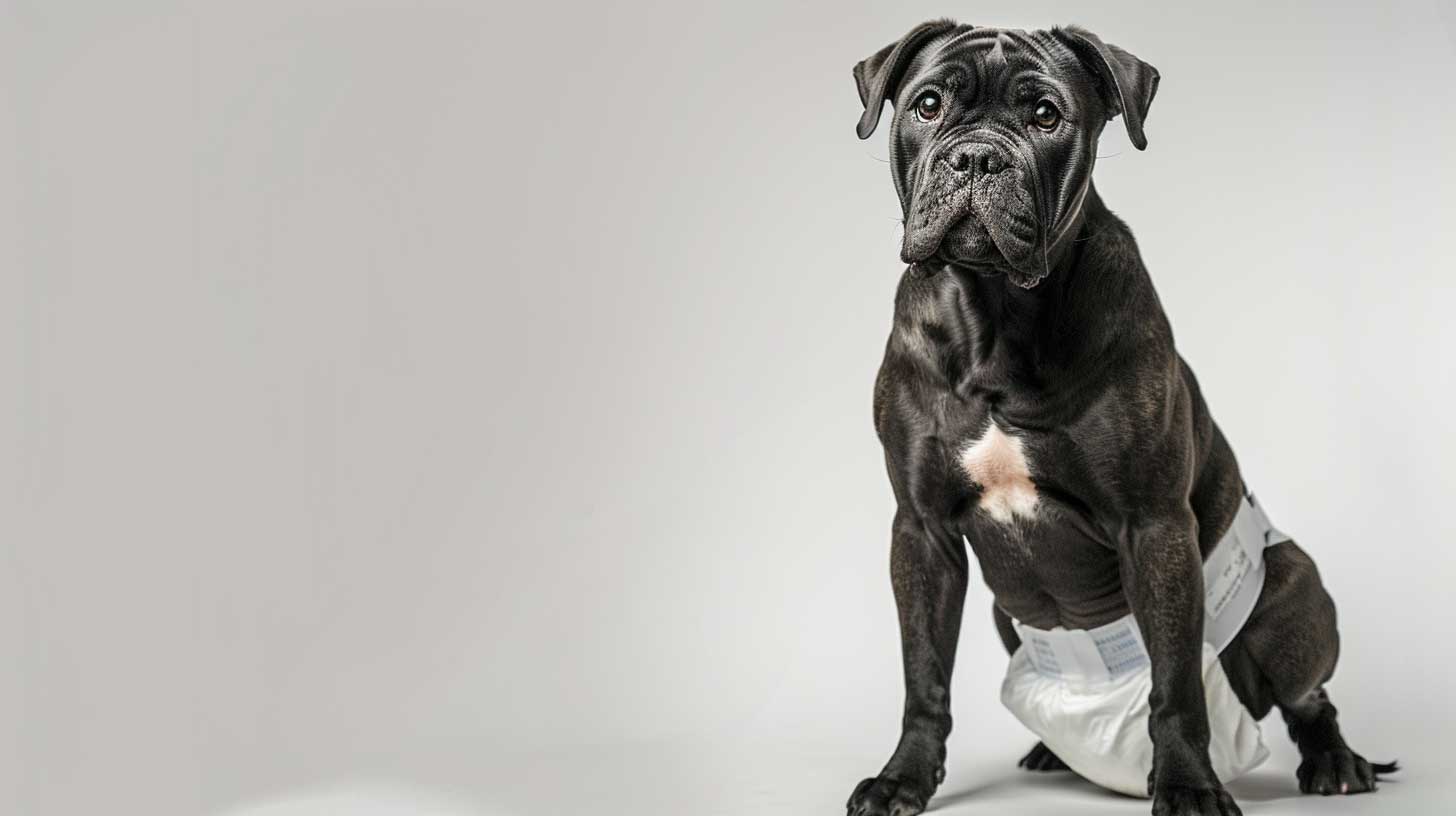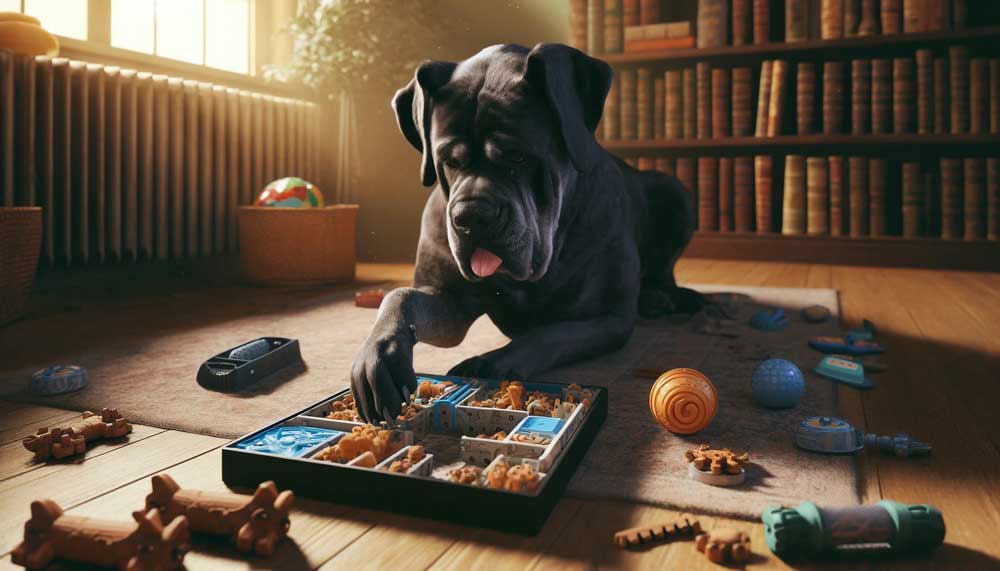We often wonder what puppy to choose from the litter, whether we are buyers or breeders. All written books about dogs generally advise us first to study basic information about the breed and to bring an experienced person when choosing. We have solved only a part of the problem using the abovementioned method.
An experienced person will generally base his judgments on the physical appearance of the dog, the health status, and the condition of the individual or the whole litter. And then, here comes the following question: How well can someone assess the characteristics and health of a dog during short buying that typically lasts only 15–30 min? Who should help the breeder choose the puppy for further breeding so we can get the right representative of its breed? Those are just some of the many questions every future owner or breeder has in front of himself. To help both of them, we enclose the original puppy’s character test.
Campbell’s method
The test primarily refers to working dog breeds and was compiled based on long-term testing by Campbell, so the method itself is called “Campbell’s method of testing the natural basis of the puppy’s character.” Testing using this kind of method can give an almost complete picture of the character of the future dog under the condition of correct testing and normal conditions of pupil development and growth with the new owner. Puppies get tested at the age of 5 – 7 weeks, at the end of the socialization period, and we do this in a separate room outside the litter, without the influence of their mother or other dogs. Taking puppies from the litter, testing them, and returning them to litters should be done by a breeder or a person familiar with puppies and their mother to avoid unwanted harassment. The entire test consists of five parts:
1. Social attraction
2. Facility to follow
3. Response to obligation
4. Social domination
5. Acceptance to be lifted

1. Social attraction
We place the puppy on the ground, move away from him in the opposite direction from the one we came from, kneel,, and slowly weave our hands to attract his attention. You should observe how the puppy approaches- whether with a raised or lowered tail or not moving. This test reveals our puppy’s sense of socializing, trust, and autonomy. Puppy should show the following reactions to the test:
a) Approaches joyfully with a raised tail, jumps, and ‘bites’ examiner’s hands
b) Approaches freely with a raised tail, lifts, and waves with the paw towards the direction of our hand
c) Approaches freely but with a lowered tail
d) Doesn’t approach at all
2. Facility to follow
When examining the facility, here is the procedure: Stand beside the puppy and then go away with a standard step. You should pay attention to its ability to follow the breeder and how it goes towards him. We conclude it is an independent puppy if it doesn’t follow him. The puppy must see you when you are away. Puppy’s reactions to the test should be:
a) Follows us joyfully with raised tail, trying to bite his feet (shoes, shorts, etc.)
b) Follows us joyfully with a raised tail and goes by the leg.
c) follows us joyfully with a dropped tail.
d) Follows us unlikely with a dropped tail
e) Does not follow us or even move away
3. Response to obligation
Place the puppy on the ground and turn it on its back by gently holding it with one hand on its chest for 30 seconds. His reaction to defense or acceptance of position tells you about the tendency to accept physical and social dominance. The puppy’s reaction to the test should be as follows:
a) Vigorously fights, defends, and bites
b) Vigorously fights
c) It fights and then slackens
d) Doesn’t want to move and licks hands
4. Social domination
Place the puppy on the ground, lying on its belly, and gently pet it from the top of its head to the end of its back. Its behavior should express the acceptance or rejection of social dominance. The puppy is dominant if it tries to jump to the breeder, growls, and bites, while the independent type of a puppy will try to get out and move away. The puppy’s reaction to the test should be as follows:
a) The puppy has jumped, strikes with a paw, bites, and growls
b) The puppy has jumped and struck with a paw
c) The puppy buckles and licks the examiner’s hands
d) The puppy rolls over on its back and licks the examiner’s hands
e) The puppy moved away and doesn’t want to return
5. Acceptance to be lifted
Raise the puppy gently above the ground to lie on your palms while your fingers are crossed under his belly. Hold it for 30 seconds. With this test, the puppy loses control of the situation and is left at the examiner’s mercy. Depending on its reaction, it’s easy to determine whether the dog accepts your domination. Response to the test:
a) Twitches energetically, bites and growls
b) Twitches strongly
c) First twitches, then calms down and licks examiner’s hands
d) Doesn’t twitch, stands still,, and licks examiner’s hands.
Test results
If you have chosen reactions under the letter “A” two or more times, and the rest you have chosen the letter “B”, it is a puppy of aggressive reactions with a natural basis to develop into a dog of strong character. If you train that kind of dog’ hard, ‘ you need to know it’s willing to bite. You should train it cautiously and
a) The puppy has jumped, strikes with a paw, bites, and growls
b) The puppy has jumped and struck with a paw
c) The puppy buckles and licks the examiner’s hands
d) The puppy rolls over on its back and licks the examiner’s hands
e) The puppy moved away and doesn’t want to return

5. Acceptance to be lifted
Raise the puppy gently above the ground to lie on your palms while your fingers are crossed under his belly. Hold it for 30 seconds. With this test, the puppy loses all control of the situation and is left to the examiner’s mercy. Depending on its reaction, it’s easy to determine whether the dog accepted your domination. Reaction to the test:
a) Twitches energetically, bites and growls
b) Twitches strongly
c) First twitches, then calms down and licks examiner’s hands
d) Doesn’t twitch, stands still, and licks the examiner’s hands.
Test results
If you have chosen reactions under the letter “A” two or more times, and the rest you have chosen the letter “B”, it is a puppy of aggressive reactions with a natural basis to develop into a dog of strong character. If you train that kind of dog’ hard, ‘ you need to know it’s willing to bite. You should train it cautiously and
a) The puppy has jumped, strikes with a paw, bites, and growls
b) The puppy has jumped and strikes with a paw
c) The puppy buckles and licks examiner’s hands
d) The puppy rolled over on its back and licks examiner’s hands
e) The puppy moved away and doesn’t want to return
5. Acceptance to be lifted
Raise the puppy gently above the ground to lie on your palms while your fingers are crossed under his belly. Hold it for 30 seconds. With this test, the puppy loses all control of the situation and it’s left to the mercy of the examiner. Depending on its reaction, it’s easy to determine whether the dog accepted your domination. Reaction to the test:
a) Twitches energetically, bites and growls
b) Twitches strongly
c) First twitches, then calms down and licks examiner’s hands
d) Doesn’t twitch, stands still and licks examiner’s hands.
Test results
If you have chosen reactions under the letter “A” two or more times, and the rest you have chosen the letter “B”, it is a puppy of aggressive reactions with a natural basis to develop into a dog of strong character. If you train that kind of dog’ hard, ‘ you need to know it’s willing to bite. You should train it cautiously and without physical force. It will be a good watchdog in a calm environment of adult people, but we don’t recommend it to families with children and elderly people.
- Suppose you have chosen the reaction of the puppy under the letter “b” three or more times. In that case, it is a psychologically stable puppy with a natural basis to develop into a dog with the tendency to dominate properly. It’s suitable for education and competitions, but we don’t recommend it to families with small children.
- If you have chosen three or more times the puppy’s reactions under the letter “c”, we conclude that it has a natural basis to develop into a dog that can adapt to every kind of environment. It is especially suitable for families with children and for elderly people.
- If you have chosen the pup’s reaction under the letter “d” two or more times, in combination with the reaction under the letter “e” one or more times, you‘ve got a dog with an excessive dose of subordination. It’s going to become a dog of a soft character and with a large need for praise and flattery. It is necessary to raise it with love, to get involved in the human environment and to become self-aware. It gets along well with the children, and bites only in case of excessive torture, only for defense.
- If you have chosen two or more reactions under the letter “d” in combination with the letter “e” in part 4 of the “Social Domination” test, you have got a puppy that is hardly socializing despite the special type of education. It has a natural basis for development into a dog of timid character. If you have chosen more reactions under the letter ‘a’, this type of dog may bite the owner from fear. If you have chosen more answers under the letters ‘c’, it’s a dog with fearful reactions at the slightest pressure. This type of dog is not recommended for families with children.
- If you have chosen the reactions under the letters “a” and “e” mixed, we recommend a re-test. If you get the same result, that type of puppy has a natural basis to develop into a dog of unpredictable character and will have unpredictable reactions.
If you liked this article, feel free to share it.

